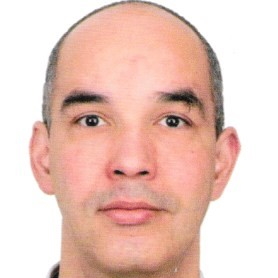At the interface of asymptotics, conformal methods and analysis in general relativity

Scientific discussion meeting organised by Dr Juan Valiente Kroon and Dr Grigalius Taujanskas.
In the sixty years since Penrose’s original insight that conformal geometry could be used to study the global structure of fields and spacetimes, these ideas have become central to many parts of mathematical and theoretical physics. Today many inspired methods and frameworks exist for asymptotic analysis in general relativity. This meeting aimed to bring together researchers working on these and related topics.
The schedule of talks and speaker biographies and abstracts are available below.
The meeting papers have been published Philosophical Transactions of the Royal Society A.
Attending this event
This event has taken place.
To view the programme, please scroll down and select the day on the left-hand side. Click the arrows to view the speakers and talks.
Enquiries: contact the Scientific Programmes team
Click watch on YouTube to view the full video playlist.
Organisers
Schedule
Chair
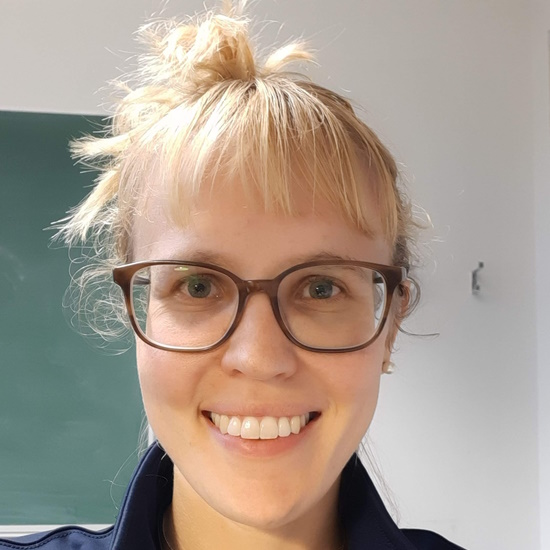
Dr Zoe Wyatt, King's College London, UK

Dr Zoe Wyatt, King's College London, UK
Zoe obtained her BA and MMath from the University of Cambridge. After a year teaching at the African Institute for Mathematical Sciences in Cape Town, she completed her PhD at the University of Edinburgh under the supervision of Dr Pieter Blue. Zoe moved back to Cambridge in 2020 as a Herchel Smith Postdoctoral Research Fellow in DPMMS and as a Junior Research Fellow at Darwin College. She joined King’s as a lecturer in April 2022.
| 09:00-09:05 |
Introduction
|
|---|---|
| 09:05-09:55 |
The relations between conformal and spectral analytic scattering theories
This talk is about two important trends of scattering theory in general relativity: time dependent analytic scattering and conformal scattering. The former was initiated by Jonathan Dimock and Bernard Kay in the early 1980's and is based on spectral and functional analysis. The latter was proposed by Roger Penrose in 1965 and then constructed for the first time by Gerard Friedlander by putting together Penrose's conformal method and another analytic approach to scattering: the Lax-Phillips theory due to Peter Lax and Ralph Phillips. Professor Nicolas shall review the history of the two approaches and explain their general principles. Professor Nicolas shall also explore an important question: 'can the tools of one approach be used to obtain a complete construction in the other?'. 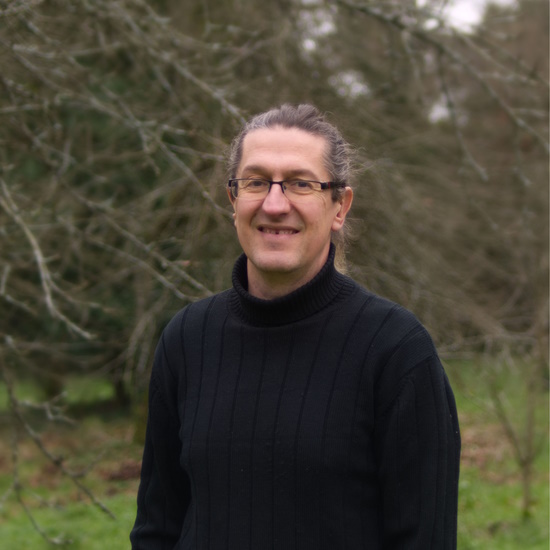
Professor Jean-Philippe Nicolas, University of Brest, France

Professor Jean-Philippe Nicolas, University of Brest, FranceProfessor Jean-Philippe Nicolas received their PhD under the supervision of Alain Bachelot in Bordeaux. This was followed by a postdoc under the supervision of Roger Penrose at the University of Oxford. They were appointed as a Lecturer in 1995 in Bordeaux and then as a Professor in Brest in 2007. |
| 09:55-10:00 |
Discussion
|
| 10:00-10:50 |
Conformally compact Riemannian manifolds with negative mass
Professor Piotr ChruÅ›ciel will describe a construction, with Erwann Delay and Raphaela Wutte, of families of asymptotically locally hyperbolic time symmetric vacuum general relativistic initial data sets with negative cosmological constant, with prescribed topology of apparent horizons and of the conformal boundary at infinity, and with controlled mass. In particular they obtain new classes of solutions with negative mass. 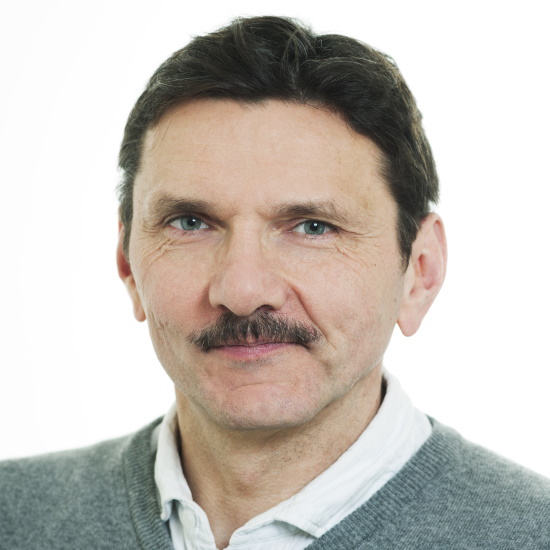
Professor Piotr Chruściel, University of Vienna, Austria

Professor Piotr Chruściel, University of Vienna, AustriaProfessor Piotr Chruściel is Professor of Gravitational Physics at the University of Vienna, Austria. He received his PhD from the Institute for Theoretical Physics of the Polish Academy of Sciences under the supervision of Professor J Kijowski, and has held positions at the Polish Academy of Sciences, Université de Tours and the University of Oxford. He is a Fellow of the Institute of Physics and Clare Hall College, University of Cambridge. He won the Prix Plumey de l'Académie des Sciences de Paris in 2003. He serves on the Editorial Board of the journal Communications in Mathematical Physics. Photo credit: Barbara Mair |
| 10:50-10:55 |
Discussion
|
| 10:55-11:20 |
Break
|
| 11:20-12:10 |
Analysis on compactifications of asymptotically flat spacetimes
Compactifications of spacetimes in General Relativity have mainly served two purposes until recently. The first purpose is exemplified by Penrose diagrams: they enable one to easily read off the causal structure of the spacetime, and in this manner also guide the analysis of wave equations using energy methods. The second purpose, which plays an important role since Friedrich's work in the 1980s, is to reduce the global-in-time analysis of linear and nonlinear wave equations to the local-in-time analysis of conformally related hyperbolic equations. In this talk, Professor Hintz describes a third purpose: on a carefully defined compactification of an asymptotically flat spacetime, one can perform precise asymptotic analysis even when the underlying metric is not smooth on the compactification, but merely conormal. This level of generality is crucial for applications to nonlinear stability problems. The process of compactification transforms a partial differential equation (PDE) on a noncompact space into a PDE on a compact space that is typically singular (ie unless the PDE is very special at infinity). The singular behaviour is a structured degeneration at the boundary hypersurfaces at infinity; geometric singular analysis is a general-purpose perspective for the study of such singular PDE. He will explain novel estimates for wave equations on Minkowski space and more general asymptotically flat spacetimes which arise naturally from this perspective, leading in particular to a new proof of the exterior stability of Minkowski space. Parts of this talk are based on joint work with András Vasy. 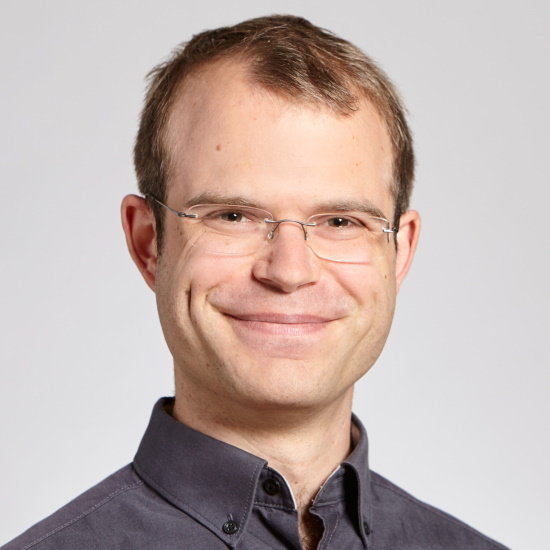
Professor Peter Hintz, ETH Zürich, Switzerland

Professor Peter Hintz, ETH Zürich, SwitzerlandPeter Hintz studies partial differential equations in general relativity. He received his PhD in 2015 from Stanford University under the supervision of Andras Vasy. Following his postdoctoral appointment at the University of California, Berkeley, he was appointed Assistant Professor at the Massachusetts Institute of Technology (MIT) in 2018. Since 2021, he has been an Associate Professor of Mathematics and Physics at ETH Zürich. For his research, Hintz has received a number of awards, including Miller, Clay, and Sloan Research Fellowships. Furthermore, he was an invited speaker at the ICM 2022, and a plenary speaker at the ICMP 2021. |
| 12:10-12:15 |
Discussion
|
Chair
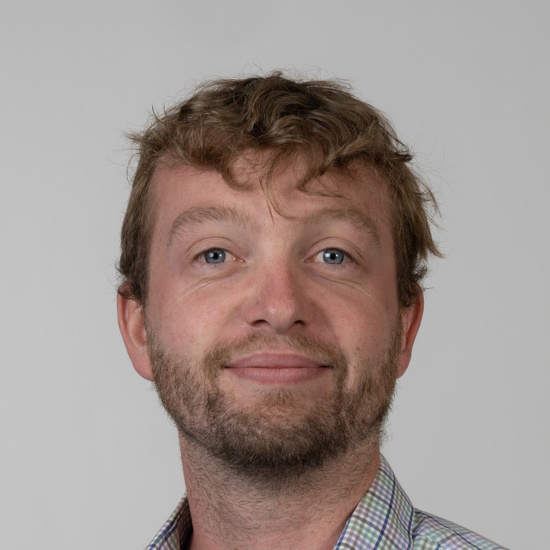
Dr Chris Stevens, University of Canterbury, New Zealand

Dr Chris Stevens, University of Canterbury, New Zealand
Chris Stevens is a Lecturer in Applied Mathematics at the University of Canterbury, New Zealand. He completed his PhD in mathematics on aspects of the conformal field equations in 2016 at the University of Otago. His research interests focus on the theoretical study of black holes and gravitational waves through the elegant interplay between differential geometry, PDE theory and numerical methods.
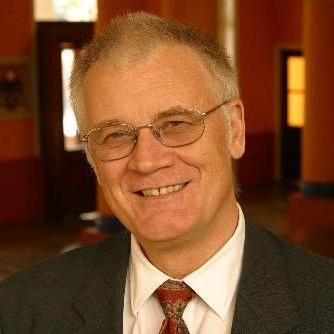
Professor Malcolm MacCallum, Queen Mary University of London, UK

Professor Malcolm MacCallum, Queen Mary University of London, UK
Professor Malcolm MacCallum studied at Cambridge, where he was a Fellow of King's College in 1970–76. In 1976–2009 he taught at Queen Mary University of London, where he was Vice-Principal for Science and Engineering from 2002–5. While at Queen Mary Professor MacCallum held visiting positions in Berkeley, Catania, Paris, New York, Melbourne and Jena. From 2009–12 he was Director of the Heilbronn Institute for Mathematical Research at the University of Bristol. His research has been mainly in gravitation theory, particularly in general relativity and its applications to cosmology, black holes and gravitational waves. Professor MacCallum was President of the International Society on General Relativity and Gravitation in 2010–2013. He also researches in computer algebra.
| 13:15-13:55 |
The calculation of the asymptotic charges at the critical sets of null infinity
Friedrich's framework of spatial infinity introduces a regular initial value problem at spatial infinity for the conformal Einstein field equations. In this formulation, spatial infinity is represented by a cylinder that connects the endpoints of past and future null infinity, these endpoints are known as the critical sets of null infinity. This representation of spatial infinity can be used to express physical quantities at the critical sets in terms of initial data given on a Cauchy hypersurface. This is essentially the topic of this talk, to show that one can express the asymptotic charges at the critical sets in terms of initial data. The discussion in this talk is heavily inspired by the calculation of the Newman-Penrose constants at the critical sets introduced by Friedrich and Kánnár. Mariem MA Mohamed will start by discussing the calculation of the asymptotic charges for the spin-2 field on Minkowski spacetime, where she shows that the asymptotic charges for the spin-2 field associated with arbitrary functions on 2-spheres are well-defined if and only if the freely specifiable data satisfy certain regularity conditions. She will then discuss the tools and techniques used to extend this to the non-linear gravitational field on Vacuum spacetimes. 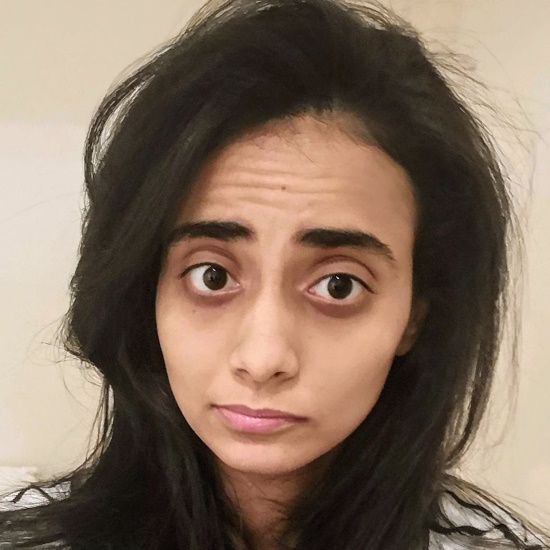
Mariem Magdy Ali Mohamed, Queen Mary University of London, UK

Mariem Magdy Ali Mohamed, Queen Mary University of London, UKMariem MA Mohamed is a PhD student at Queen Mary University of London working under the supervision of Juan A Valiente Kroon and Mahdi Godazgar. After completing a BSc in Astronomy and Physics at Cairo University in 2014, she moved to the UK to pursue postgraduate studies. She completed an MSc in Physics at Imperial College London in 2019. Mariem MA Mohamed has held a faculty position at the Astronomy department of the Faculty of Science at Cairo University since 2016. During her PhD, she published two papers. The first is focused on the investigation of the relation between two different conformal formulations of spatial infinity; namely, Friedrich’s cylinder at spatial infinity and Ashtekar’s hyperboloid at spatial infinity. The second publication is concerned with the evaluation of the asymptotic charges at the so-called critical sets of null infinity for spin-1 and spin-2 fields on Minkowski spacetime. |
|---|---|
| 13:55-14:00 |
Discussion
|
| 14:00-14:40 |
The case against Smooth Null Infinity
Leonhard Kehrberger begins with a brief overview of some of the historically most relevant approaches to modelling the asymptotics of isolated systems. In particular, they discuss the notions of Bondi coordinates, the peeling property and Penrose's asymptotic simplicity (which all model isolated systems by demanding that the spacetime exhibits certain structure near null infinity), as a well as a different notion of asymptotic flatness employed by Christodoulou and Klainerman in their prominent proof of the stability of Minkowski space (which models isolated systems by demanding that spacetime exhibits certain decay near spacelike infinity). They then present a construction of spacetimes describing the exterior of $N$ massive particles coming from the infinite past. From the physical perspective, this includes a discussion of how Post-Newtonian theory can be used to predict the gravitational radiation emitted by $N$ infalling masses from the infinite past up to some finite advanced time. This already shows that past null infinity $\mathcal{I}^-$ is not smooth. From the mathematical perspective, this prediction, together with the condition that there be no incoming radiation from $\mathcal{I}^-$, is taken as a starting point to set up a scattering problem for the linearised Einstein vacuum equations around Schwarzschild in the infinite past. Leonhard Kehrberger finally outlines how to solve this scattering problem and how to obtain the asymptotic properties of this scattering solution near spacelike infinity $i^0$ as well as future null infinity $\mathcal{I}^+$, and they prove that none of the notions mentioned above are satisfied. Leonhard Kehrberger, University of Cambridge, UK
Leonhard Kehrberger, University of Cambridge, UKThe path that eventually led Leonhard to the field of analysis in general relativity began in 2014 when they started their Bachelor's studies at the University of Hamburg. Their degree was in physics, but they also took many mathematics courses and found great enjoyment in those, particularly in the analysis courses. After an Erasmus semester in Uppsala, Sweden, and finishing their Bachelor's thesis, they then went to the University of Cambridge for their master's degree. During that time, Leonhard learned much about currently active research fields in mathematical physics and mathematics, and were very happy to discover that general relativity is full of exciting open analytical and physically relevant problems. They thus started doing their PhD under the supervision of Mihalis Dafermos. They were lucky to be able to go on research visits to Münster and Princeton. After their PhD, they will be a postdoctoral researcher at the Max Planck Institute in Leipzig under the supervision of Dejan Gajic. |
| 14:40-14:45 |
Discussion
|
| 14:45-15:15 |
Break
|
| 15:15-15:55 |
Conformal geodesics and the evolution of spacetimes with positive cosmological constant
Conformal geodesics represent a conformally invariant generalisation of the notion of standard metric geodesics. The properties of these curves can be used to study the global structure of solutions to the Einstein field equations. In particular, the existence of conformal Gaussian gauge systems associated to these curves together with the extended conformal Einstein field equations can be used to analyse the non-linear stability of vacuum spacetimes with positive cosmological constant. Special focus is given to de Sitter-like spacetimes with spatial sections of negative scalar curvature and to the subextremal Schwarzschild-de Sitter spacetime. The strategy of the proof on the latter case relies on the observation that the cosmological region of this exact solution admits a smooth conformal extension with a spacelike conformal boundary. This region can be covered by a non-intersecting congruence of conformal geodesics. Thus, the future domain dependence of suitable spacelike hypersurfaces can be expressed in terms of a conformal Gaussian gauge. A perturbative argument then allows to prove existence and stability results close to the conformal boundary. In particular, small enough perturbations of initial data give rise to a solution to the Einstein field equations which is regular at the conformal boundary. 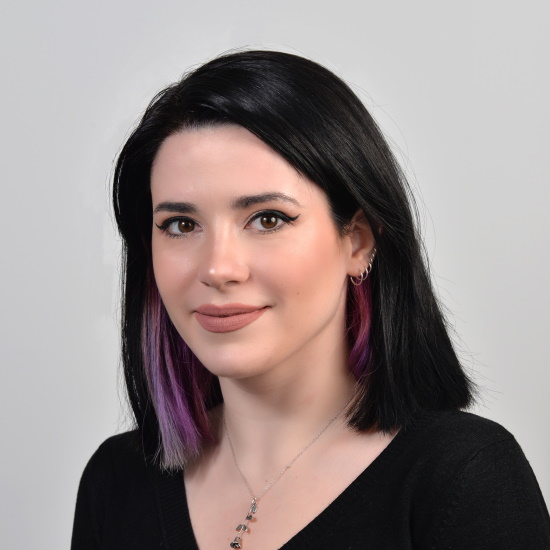
Marica Minucci, Queen Mary University of London, UK

Marica Minucci, Queen Mary University of London, UKMarica Minucci is a final year PhD student in Mathematics at Queen Mary, University of London under the supervision of Dr Juan Antonio Valiente Kroon. Her research is devoted to understanding the mathematical aspects of Einstein’s theory of General Relativity. In particular, she works on devising new strategies to prove the non-linear stability of vacuum spacetimes with positive cosmological constant. The main strategy relies on conformal methods along with hyperbolic reduction procedures. She is also interested in problems arising from the conformal structure of spacetime such as the problem of spatial infinity. Before starting her PhD, Marica received a BSc and an MSc in Theoretical and Mathematical Physics at University of Naples "Federico II". |
| 15:55-16:00 |
Dicussion
|
| 16:00-17:00 |
Plenary talk: Conformal Infinity - from the origins of the idea to Cyclic Cosmology
Sir Roger Penrose OM FRS, Mathematical Institute, University of Oxford, UK
Sir Roger Penrose OM FRS, Mathematical Institute, University of Oxford, UK
Roger Penrose was born on 8 August, 1931, in Colchester, Essex, UK. He obtained a B.Sc. (in mathematics) at University College London, in 1952, and a Ph.D. (in algebraic geometry) at St John's College, Cambridge, in 1957. He has held several teaching and research positions in the UK and USA, most particularly at Birkbeck College London, then Rouse Ball Professor of mathematics at Oxford University in 1973 (becoming Emeritus in 1998). He holds the Francis and Helen Pentz Distinguished (visiting) Professorship of Physics and Mathematics at Penn State University, USA and is a Visiting Professor at Queen Mary, University of London. He was elected FRS in 1972, knighted in 1994 for services to science, and obtained the Order of Merit in 2000. He has won numerous awards, including the 1971 Heinemann Prize, sharing the 1988 Wolf Prize with Stephen Hawking, the London Mathematical Society’s de Morgan Medal, and the Royal Society’s Copley Medal, and holds 14 honorary degrees. He has written many scientific papers and several books, including The Emperor’s New Mind, which won the 1990 Science Book Prize. His most recent book is The Road to Reality. His research interests include many aspects of physics and geometry, where he has contributed to general relativity theory, to cosmology, to the foundations of quantum theory, and to the theory of non-periodic tilings. He is the originator of spin-networks and twistor theory. He has made proposals relating to the physical basis of consciousness.
|
| 17:00-18:00 |
Networking
|
Chair
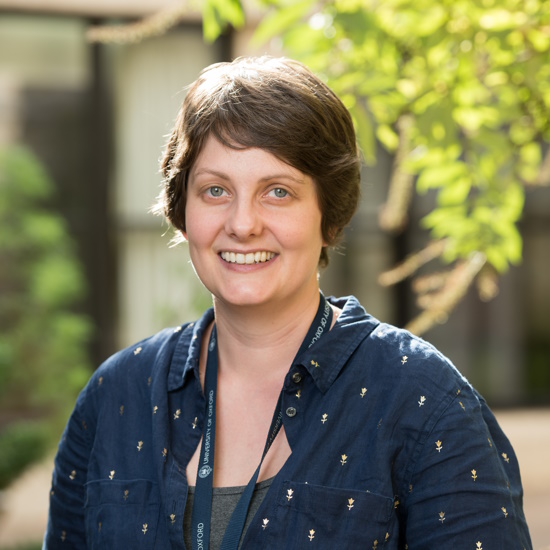
Dr Katy Clough, Queen Mary University of London, UK

Dr Katy Clough, Queen Mary University of London, UK
Katy's research focuses on using numerical solutions to understand the consequences of Einstein's theory of general relativity, in particular concerning black hole environments and inhomogeneities in the early universe. She is a member of the Geometry, Analysis and Gravitation group in the School of Mathematical Sciences at Queen Mary University of London.
| 09:00-09:50 |
Asymptotics in General Relativity from the perspective of Cartan geometry
There are several classical notions of asymptotic flatness in General Relativity: The exact procedures and geometries are however very different depending on whether one considers an asymptote in null, time-like, or space-like directions. Dr Herfray will show that these can nonetheless all be derived from one unique concept, curved obit decomposition of Cartan geometry and that there is therefore a profound unity in these notions of asymptotics. 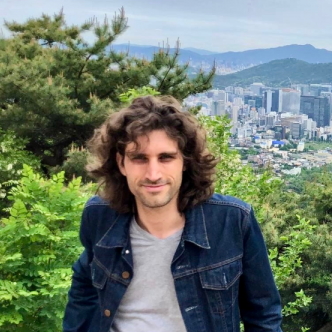
Dr Yannick Herfray, University of Tours, France

Dr Yannick Herfray, University of Tours, FranceY Herfray defended a PhD on twistor theory in 2017 (Dual-PhD between ENS Lyon (France) and University of Nottingham (UK)). During his post-docs at Université Libre de Bruxelles (Belgium) and Umons (Belgium) he worked on a variety of subject including conformal geometry, asymptotic symmetries, higher spin and flat holography. An important theme of his research his the investigation of asymptotic properties of space-times from the perspective of Cartan geometries. He is 'Maitre de conférence' (associate professor) in Tours since September 2022. |
|---|---|
| 09:50-09:55 |
Discussion
|
| 09:55-10:45 |
Conformal methods in mathematical cosmology
When he first introduced the notion of a conformal boundary into the study of asymptotically empty space-times Penrose was already aware that the boundary would be null, space-like or time-like according as the cosmological constant Λ was zero, positive or negative. While most applications of the idea have been to the zero-Λ, asymptotically-Minkowskian case, there also has been work on the nonzero cases. Here Professor Tod concentrates on positive Λ, which is the appropriate case for cosmology of the universe in which we live. With a space-like future conformal boundary, we may follow Friedrich and contemplate using the boundary as a Cauchy surface with data for a conformal version of the Einstein equations. Assuming a suitable form of Penrose's Weyl Curvature Hypothesis, we may also contemplate rescaling an initial 'Big Bang' singularity for use as a Cauchy surface for a similar system. Finally we may follow Penrose's 'outrageous suggestion' and contemplate a universe of successive aeons, each of which is an expansion from a regularised Big Bang surface to a regularised future conformal boundary that provides the regularised Big Bang of the next aeon. Now there is a regular conformal metric common to all aeons, while the (conformally-related) physical metric runs from singularity to singularity. Professor Paul Tod, University of Oxford, UK
Professor Paul Tod, University of Oxford, UKProfessor Tod was an undergraduate in Cambridge, and received his DPhil in 1976 at the University of Oxford, under the supervision of Roger (now Sir Roger) Penrose, after an earlier period under Dennis Sciama. After two years at the University of Pittsburgh, he returned to Oxford and after several post-docs became lecturer at the Mathematical Institute and Fellow of St John's in 1983, a post from which he retired in 2016. Professor Tod is now an Emeritus Research Fellow of St John's and proud grandfather of twin granddaughters. |
| 10:45-10:50 |
Discussion
|
| 10:50-11:20 |
Break
|
| 11:20-12:10 |
Cosmological models: hierarchies of asymptotic behaviour
De Sitter space-time is a time-like and null geodesically complete solution to the Einstein-λ vacuum field equations with cosmological constant λ > 0 and compact Cauchy hypersurfaces that admits smooth conformal boundaries at future and past time-like infinity. Consider general smooth Cauchy data for the same equations on a Cauchy hypersurface S in this space-time. If these data are sufficiently close to the de Sitter data induced on S the conformal Einstein equations imply that they develop into solutions that also admit smooth conformal boundaries and even extend, as solutions to the conformal Einstein equations, beyond these boundaries. In this talk Professor Friedrich discusses their interest in and some answers to the question to what extent the existence of smooth conformal future extensions generalise to the Einstein-λ equations with matter fields. Simple FLRW solutions show that this may require quite restrictive conditions on the matter fields. Examples suggest that in the case of the Einstein-λ equations coupled to conformally covariant matter fields with trace-free energy-momentum tensor the existence of smooth conformal extensions is a general feature of such systems. He discusses cases of solutions with smooth conformal extensions where the matter fields are conformally non-covariant but still conformally privileged in some sense and cases in which such a property seems to be given only asymptotically and smooth conformal extensions exist or their existence remains undecided so far. 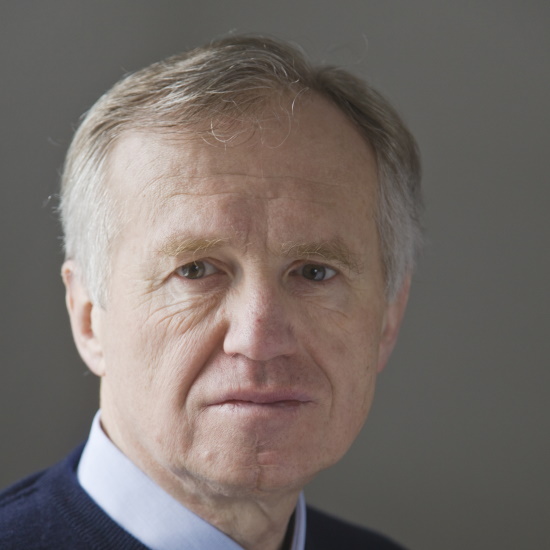
Professor Helmut Friedrich, University of Potsdam, Germany

Professor Helmut Friedrich, University of Potsdam, GermanyProfessor Friedrich originally trained and worked as a technician with the Deutsche Lufthansa and other firms. He studied physics at the University of Hamburg and was a scientific assistant at the University of the Bundeswehr in Hamburg. He received his PhD in physics at the University of Hamburg. Between 1980 and 1981 he had a stay at the University of Cambridge with a fellowship of the European Science Exchange Programme. Between 1983 and 1988 he was a Heisenberg Fellow of the Deutsche Forschungsgemeinschaft. Professor Friedrich received his 1984 Habilitation and PD for Theoretical Physics at the University of Hamburg in 1984. In 1988 he was a Senior scientist at the Max-Planck-Institut for Astrophysics at Garching near Munich. He received his Habilitation and PD for Mathematics at the University of Munich in 1991. In 1995 he worked as a Senior scientist at the Max-Planck-Institut for Gravitational Physics at Potsdam, and became apl Professor at the University of Potsdam in 2000. |
| 12:10-12:15 |
Discussion
|
Chair
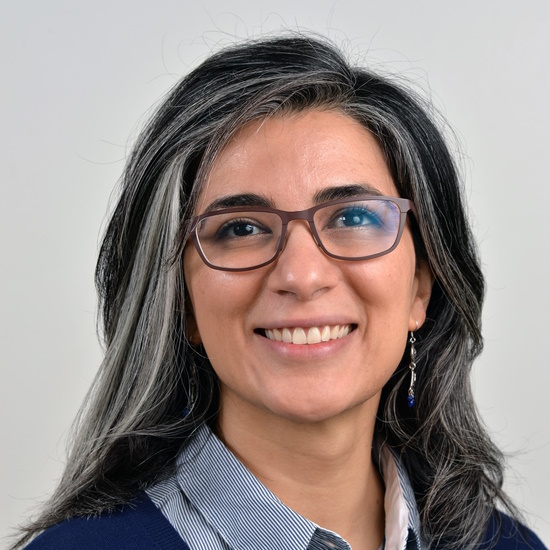
Dr Shabnam Beheshti, Queen Mary University of London, UK

Dr Shabnam Beheshti, Queen Mary University of London, UK
Dr Shabnam Beheshti is a Reader in Mathematics at Queen Mary University of London. Her research area is the geometric analysis and nonlinear partial differential equations (PDEs) in Mathematical Physics. She has worked on projects ranging from integrability of harmonic maps in General Relativity to combinatorial structure in PDEs of Fluid Dynamics. More recently, she has been using analytic and geometric tools to study the nature of accretion in relativistic hydrodynamics. She is also interested in using conformal methods to better understand PDEs which couple Einstein's Equations to viscous fluids and elastic matter models. Dr Beheshti holds a BSc from McGill University, MSc from Texas Tech University, and a PhD in Mathematics from the University of Massachusetts, Amherst. She has held positions as Visiting Fellow at the Tata Institute of Fundamental Research, Assistant Professor of Mathematics at Rutgers University, and LMS Grace Chisholm Young Fellow at QMUL, before taking up her current post at QMUL.
| 13:15-14:05 |
The good-bad-ugly system near spatial infinity on flat spacetime
A model system of equations that serves as a model for the Einstein field equation in generalised harmonic gauge called the good-bad-ugly system is studied in the region close to null and spatial infinity in Minkowski spacetime. This analysis is performed using H Friedrich’s cylinder construction at spatial infinity and defining suitable conformally rescaled fields. The results are translated to the physical set up to investigate the relation between the polyhomogeneous expansions arising from the analysis of linear fields using the spatial-infinity-cylinder framework and those obtained through a heuristic method based on Hormander’s asymptotic system. 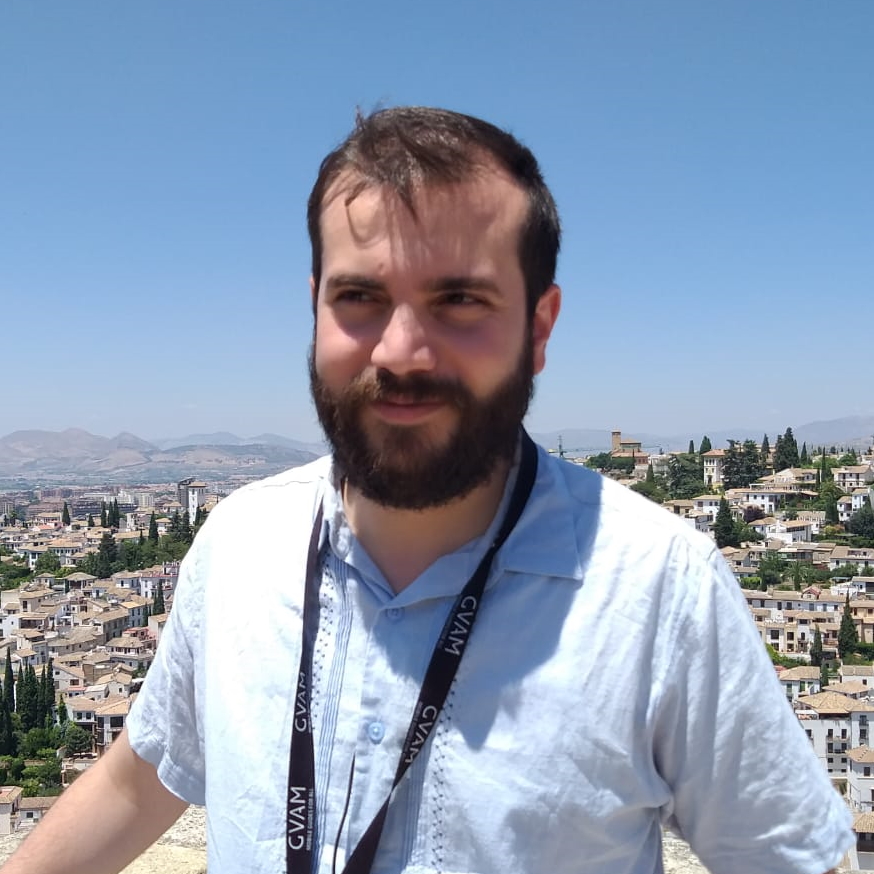
Dr Edgar Gasperin, Instituto Superior Técnico, Lisbon, Portugal

Dr Edgar Gasperin, Instituto Superior Técnico, Lisbon, PortugalEdgar Gasperin is an FCT-researcher at Instituto Superior Técnico (IST) in Lisbon, Portugal. He did his undergraduate studies in Physics at the National Autonomous University of Mexico (UNAM), graduating in 2012. Then, he did his PhD at Queen Mary University of London in Mathematical Relativity and graduated in 2017. In 2018, he joined the Instituto Superior Tecnico as a postdoc researcher working on theoretical aspects of formulations of the Einstein field equations for numerical implementations. In 2020 he started a postdoc at the Institut de Mathématiques de Bourgogne working on quasinormal modes in General Relativity and in 2021 he rejoined IST with an FCT-research fellowship. His research is concerned with the analysis of global properties of solutions to the Einstein field equations at the conformal boundary. |
|---|---|
| 14:05-14:10 |
Discussion
|
| 14:10-15:00 |
Hyperboloidal foliations and the gravitational self-force programme
Direct observation of gravitational waves (GWs) marks a new era in astrophysics. The arrival of highly sensitive ground- and space-based detectors shall make precision gravitational wave astronomy routine. Critical sources of GWs for the LISA Mission are the so-called extreme mass ratio inspirals (EMRI), ie relatively light objects orbiting a supermassive black hole. Among the methods to tackle the two-body problem in General Relativity (GR), the gravitational self-force approach is the best option to describe EMRIs within the accuracy demanded by LISA. On the theoretical side, it is essential to model highly accurate waveform to optimise the scientific gain of future detections. For this purpose, there has been diagnosed a need for a robust and systematic framework adapting to the geometrical structure of the spatial scales near the black hole and the (infinitely) far radiation zone. On the mathematical side, the conformal approach to GR, implemented in practice using hyperboloidal coordinates, has been identified as the best strategy to tackle the problem. Complementary, spectral methods provide a robust tool to solve the underlying equations accurately. In this talk, Dr Panosso Macedo will discuss the recent developments within this research programme. 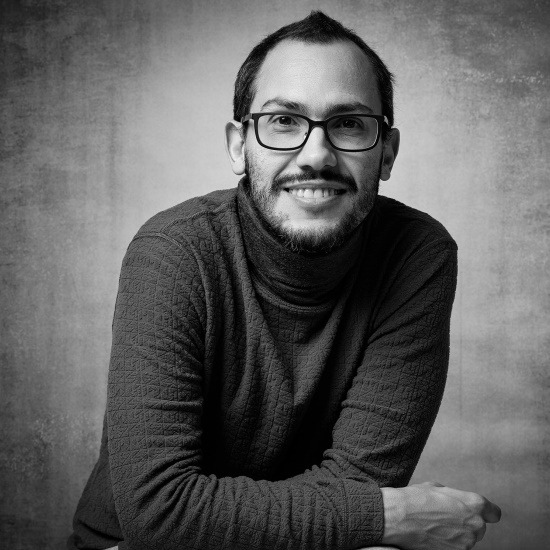
Dr Rodrigo Panosso Macedo, Nils Bohr Institute, University of Copenhagen, Denmark

Dr Rodrigo Panosso Macedo, Nils Bohr Institute, University of Copenhagen, DenmarkCurrently at the Nils Bohr Institute, University of Denmark, Dr Panosso Macedo works in the intersection between mathematical relativity, numerical relativity and astrophysics. On the good days, he provides a link between the three fields. On the bad days, he doesn't belong anywhere. Dr Panosso Macedo graduated from the Federal University of São Carlos and got his PhD at the University of São Paulo. During his PhD, he lived in Germany for an exchange programme at the Max Planck Institute for Gravitational Physics and ended up staying as a post-doc at the University of Jena. Then, he moved to the UK and worked at the Queen Mary University of London and the University of Southampton. In between, he also had some short stays in France at the University of Bourgogne-Dijon and Portugal at CENTRA-Lisbon. |
| 15:00-15:05 |
Discussion
|
| 15:05-15:35 |
Break
|
| 15:35-16:25 |
Characterisations of Kerr-de Sitter in arbitrary dimension from null infinity
The Kerr metric has remarkable local geometric properties that are shared its generalisation to positive cosmological constant, namely the Kerr-de Sitter metric. These geometric properties essentially characterise these metrics among all Λ-vacuum solutions of the Einstein field equations admitting a Killing vector. Gibbons et al found a generalisation of the Kerr-de Sitter metric to higher dimensions. However, the geometric characterisation above requires four spacetime dimensions, so characterising geometrically the Kerr-de Sitter metric in higher dimensions requires an alternative method. One viable approach is to understand the behaviour of these metrics at future null infinity. After reviewing the Fefferman-Graham expansion and well-posedness results of the Λ-vacuum field equations in arbitrary dimensions, as well as the necessary and sufficient condition for the existence of a Killing vector, we shall introduce a canonical TT tensor at null infinity constructed from a conformal Killing vector. Conformal flatness and this canonical TT tensor provide initial data to a family of Λ-vacuum spacetimes to which the Kerr-de Sitter metric belongs. This can be used to characterise geometrically these metrics in a way that extends the four-dimensional case. We shall also present various uniqueness properties of the Kerr-de Sitter-like metrics in dimensions bigger than four. 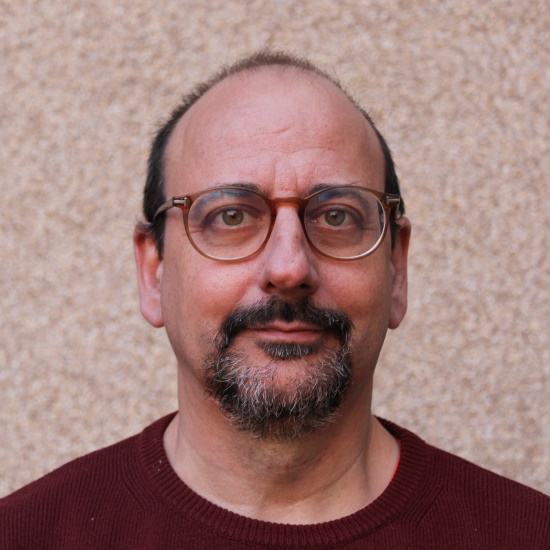
Dr Marc Mars, University of Salamanca, Spain

Dr Marc Mars, University of Salamanca, SpainDr Mars studied the first degree in Physics at the University of Barcelona and the PhD in theoretical Physics at the same university. Their first postdoc was at the School of Mathematical Sciences at Queen Mary College, London which was then followed by postdocs at the University of Vienna and the Albert Einstein Institute in Postdam. Since 2002 Dr Mars has worked at the University of Salamanca (Spain) in the research group of Gravitation and Cosmology. They have worked on various aspects of Einstein's gravitational theory, with emphasis in its Mathematical Relativity. Their research is devoted to theoretical gravitation, fundamentally in the area of mathematical relativity. They have worked in various problems in this field, which include matching of spacetimes, self-gravitating objects in equilibrium, properties of black hole, trapped surfaces, geometric inequalities, perturbation theory or null geometry, among others. |
| 16:25-16:30 |
Discussion
|
| 16:30-16:35 |
Closing remarks
|

